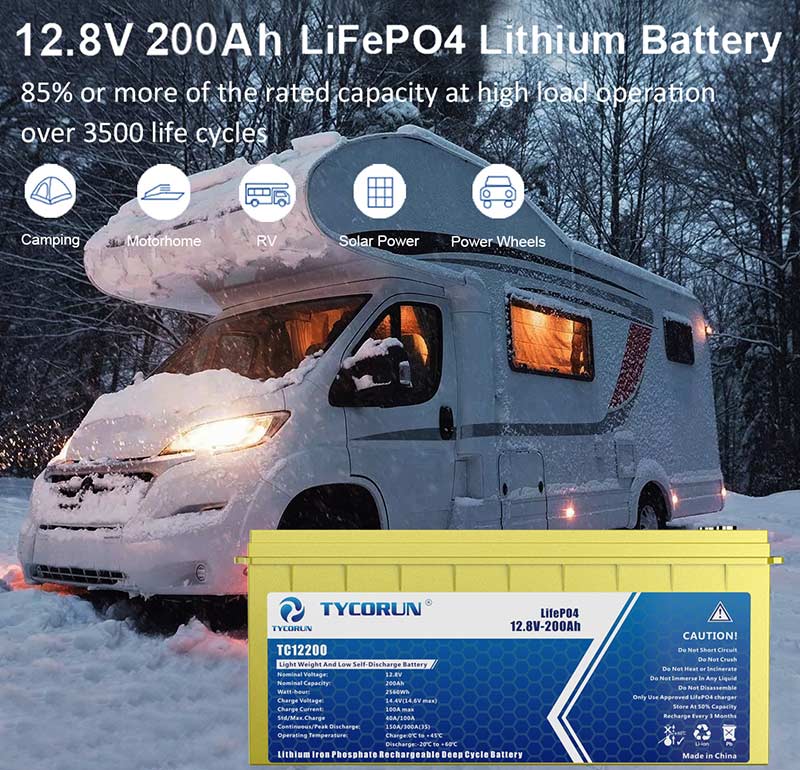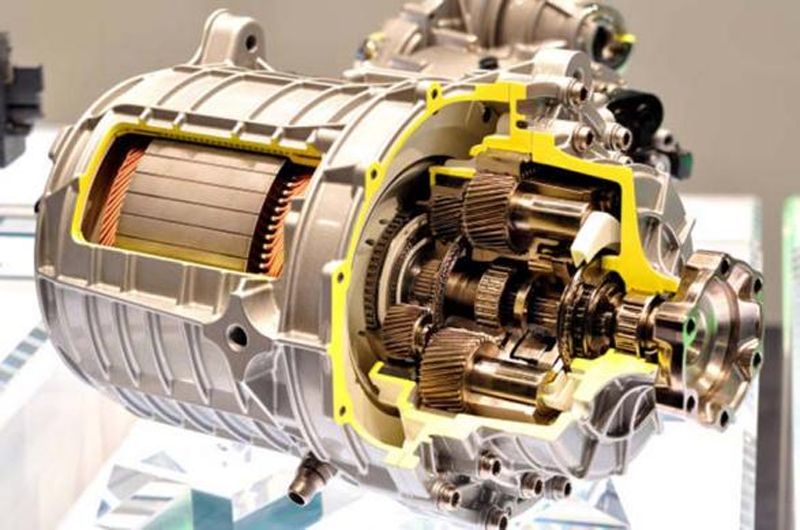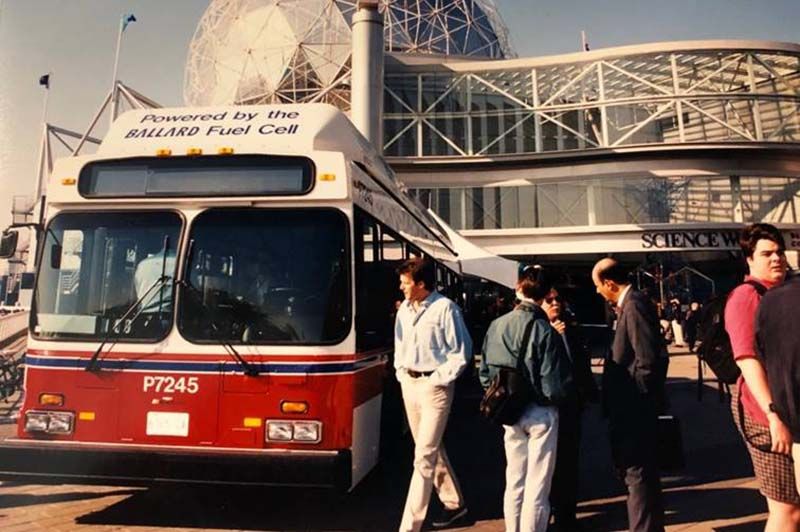
|
Main content: |
The push for battery technology
Judging from the development process of electric vehicles for more than 100 years, every leap of electric vehicles has an indissoluble bond with the introduction of high-performance batteries. In 1990, the "American Advanced Battery Consortium" was established and proposed the main performance indicators of electric vehicle batteries. These indicators have gradually become the main targets for the development of on-board power batteries in the future.
Under the urging of the "ZEV Act", the three major auto companies, General Motors, Ford and Chrysler, joined the energy industry, power industry and battery manufacturers to establish the "United States Advanced Battery Consortium", namely the United States Advanced Battery Consortium, abbreviated as USABC. The consortium has set mid-term, transitional and long-term development goals for advanced batteries for a period of 12 years.
For most of the 20th century, lead-acid and nickel-cadmium batteries reigned supreme. Lead-acid batteries have a place in the field of electric vehicles with the biggest advantage of low price. Since 1991, SAFT has cooperated with Peugeot-Citroen Group to develop nickel-cadmium batteries for electric vehicles. Compared with lead-acid batteries, nickel-cadmium batteries have more than 50% higher energy density and 1-2 times longer lifespan, making them more suitable as power sources for electric vehicles.
French SAFT company is a subsidiary of Alstom Electric Company specializing in the production of nickel-cadmium batteries, and it is also one of several major battery production companies in the world. In the past, the company mainly produced and developed special nickel-cadmium batteries (removable power sources) for the military, aviation and aerospace sectors, and its technical level was world-class.
In pursuit of greater energy density, while considering environmental factors, people turn their attention to nickel-metal hydride batteries and lithium (ion) batteries. In 1993, Panasonic demonstrated to the world a sealed nickel-metal hydride battery, which has twice the energy density of traditional batteries, and there is no hidden danger of cadmium pollution. Even more encouraging is that an electric car loaded with such a battery can travel twice as fast. Since then, nickel-metal hydride batteries have gradually replaced the status of nickel-cadmium batteries. In 1997, Europe tested the first electric car with a lithium battery. Tests show that lithium batteries have the advantages of light weight, large energy storage, and high power, which better meet the requirements of electric vehicles and are regarded as one of the most suitable power sources for electric vehicles.

Figure: Tycorun RV Lithium Battery
Development of electric motor technology
In the second half of the 20th century, the third industrial revolution promoted the further development of electric motors. Since the 1990s, automotive motors have gradually transitioned from the original DC type to the AC type. This change is inseparable from the characteristics of AC motors, which have higher power density than DC motors, can regenerative braking, and do not need to worry about routine maintenance as before. During this period, there were three main types of AC motors: AC induction motors, permanent magnet motors and switched reluctance motors. Although the AC induction motor is simple and reliable, its high price makes it difficult to popularize and apply it in electric vehicles. In contrast, permanent magnet motors are small in size, high in efficiency, and relatively affordable, making them naturally the best choice for electric vehicles.
Permanent magnet motors can be seen in a variety of electric vehicles, such as Japan's "IZA" (1991), Toyota's RAV4-EV (1997) and so on. In addition, the switched reluctance motor has a firm structure, good startability, simple manufacturing process, and low cost, and is also a relatively suitable motor for electric vehicles. Of course, the research on electric motors is far from perfect. With the in-depth research and the adoption of new materials and new processes, the performance of electric vehicles will also be improved.

Figure: Automotive permanent magnet motor
Electric vehicle family
Since the 1990s, the United States, Japan, Germany, France and other countries have made substantial progress in the research and development of pure electric vehicles. Pure electric vehicles have also found their own commercial destination for short-distance transportation in cities and communities, such as urban public transportation, sanitation and transportation. In 1998, Ford Motor Company launched the Ranger electric vehicle dedicated to postal transportation. It is sturdy and reliable, and is very suitable for postal services with relatively fixed driving routes. The following year, the U.S. Postal Service ordered 500 Ranger electric vehicles for the postal service. The car uses a nickel-metal hydride battery with a driving range of 95 kilometers and a top speed of 120 kilometers per hour. This is the largest electric vehicle order in U.S. history.

Figure: Ford Ranger electric car
Water is the coal of the future. The energy of tomorrow is the product obtained by electrolysis of water. The elements hydrogen and oxygen released after water electrolysis will guarantee the earth's energy supply for a long time. - Verne
However, the specific energy of the on-board power battery is low, and the driving range of pure electric vehicles is short. There is no breakthrough solution for this century-old tumor of pure electric vehicles, and pure electric vehicles have never been able to become the mainstream of land transportation. In addition, if the electricity generated by traditional methods such as thermal power generation is used to charge an electric vehicle, the coal-to-electricity conversion process it undergoes will also cause atmospheric pollution, and at the same time, under the "well-to-wheel" (oil well to wheel) correlation calculation The energy conversion efficiency is also not optimistic. In addition, the environmental pollution caused by discarded used batteries should not be underestimated. The oil crisis decades ago made mankind deeply aware that oil depletion will eventually come, and began to seriously think about how the existing transportation mode will be maintained and developed in the era of no oil. As a result, human beings once again exerted their extraordinary imagination and innovation ability, and embarked on the road of exploration to drive the revolution, and the fuel cell vehicle, a new member of the electric vehicle family, came into being. A fuel cell vehicle is an electric vehicle that uses a fuel cell as an on-board power source. Fuel cells run on hydrogen, a low-polluting renewable energy source. The combination of hydrogen and high-efficiency fuel cells greatly improves the energy conversion efficiency, enabling on-board powertrains.
The overall efficiency from primary energy to power output is greatly improved. Compared with diesel locomotives, fuel cell vehicles are quieter and have no harmful gas emissions, which greatly reduces noise pollution and air pollution in the human living environment. Compared with pure electric vehicles, by improving the hydrogen storage capacity of the hydrogen tank, the driving range is greatly increased, which can essentially overcome the shortcoming of pure electric vehicles.
Unlike a battery, which can only store limited electrical energy, a fuel cell is a device that can continuously generate electrical energy through chemical reactions as long as the reactive gas is continuously supplied. As the main power source of fuel cell vehicles, fuel cells make oxygen and oxygen in the atmosphere through the gain and loss and transfer of electrons to generate electricity to start the motor to drive the vehicle. This process produces no other emissions except water. High efficiency, no noise, zero emissions, and diversified fuel sources have added a lot of leverage to the application of fuel cells in the automotive field.
The early fuel cells were not suitable for vehicles due to their large size. Many car manufacturers believed that the future of fuel cells was bleak and there was little investment in research and development. It wasn't until Ballard Power Systems successfully developed the proton exchange membrane fuel cell (PEMFC) that fuel cells made their mark in the automotive world. In 1993, Ballard developed the world's first bus using proton exchange membrane fuel cells, becoming the world's first trial-produced fuel cell bus manufacturer. The bus uses hydrogen as fuel, with 200 kilograms of hydrogen stored in high-pressure hydrogen cylinders under the floor of the car. The car has a power of 105 kilowatts, a maximum speed of 72 kilometers per hour, and a driving range of up to 160 kilometers, which basically meets the requirements of urban buses. Later, Ballard sold the 20-passenger fuel cell vehicle to Los Angeles Airport. When the fuel cell vehicle was tested at the Eigago Transportation Bureau, two Japanese companies, Toshiba and Nissan, sent R&D personnel to Chicago for a test ride. Appreciate it and think it is the most ideal means of transportation in the 21st century.

Figure: Ballard Fuel Cell Bus
In the mid-1980s, Ballard launched the "Ballard Fuel Cell" based on the fuel cell of the Gemini spacecraft after a series of improvements. In 1993, Ballard was the first to release the news of fuel cell vehicles. Shocked the world's major auto manufacturers, so the auto industry is no longer silent. A person in the Japanese auto industry once said, "Although Ford, Daimler-Benz and various Japanese automakers are all developing fuel cells, Ballard's products are more than ten or twenty times better in power and performance." Ballard shoulders the global expectations for new energy, and some people jokingly call the company "the Intel of the automotive industry."
Many issues, such as the manufacturing cost of fuel cells, the storage and transportation of hydrogen, and the public's approval of fuel cell vehicles, have not been well resolved. In addition, fuel cell vehicles that are too quiet cannot bring the "hearing enjoyment" as shocking as the roar of the motor. Disappointing some car enthusiasts too. Therefore, in this era of fuel cell vehicles only showing "sharp corners", some people's estimates of it are too optimistic, and the results will inevitably be unsatisfactory. The commercialization of fuel cell vehicles needs to go through a long and arduous road. Along the way, we need time to solve technical problems, build hydrogen refueling stations, and make people readily accept this new thing. During this period, a transitional technology is needed to meet the requirements of energy saving and emission reduction regulations, and hybrid electric vehicles are an option.
The hybrid electric vehicle mainly uses the internal combustion engine and the battery as the power source, taking into account the characteristics of both, which can improve the economy of the engine without affecting the power performance. However, it cannot be truly zero-emissions like a fuel cell vehicle. Until zero-emission electric vehicles become mainstream, hybrids are better equipped to deal with new environmental regulations.
The main reasons for the energy saving and emission reduction of hybrid vehicles are: First, the maximum power of the internal combustion engine can be determined according to the average required power after the hybrid vehicle, so that the internal combustion engine can work in the optimal working area with low fuel consumption and less pollution. When the load is large, the insufficient power of the internal combustion engine is provided by the battery; when the load is small, the surplus power of the internal combustion engine is used for electric discharge charging. Secondly, thanks to the battery, energy can be recovered from braking, downhill and idling. Finally, when driving at low speeds, the combustion engine can be shut down and powered by the battery alone to achieve "zero" emissions. In addition, because of the auxiliary function of the battery-motor system, the starting and acceleration performance of the car is greatly improved, so that the car can achieve fuel saving under these two "high fuel consumption" conditions.
As a result, electric vehicles have been expanded to three major areas: pure electric vehicles, hybrid vehicles and fuel cell vehicles. With the innovation of technology and the development of the times, the electric vehicle family will grow stronger and stronger, and the trend of transportation returning to electric vehicles is becoming clearer day by day.
















